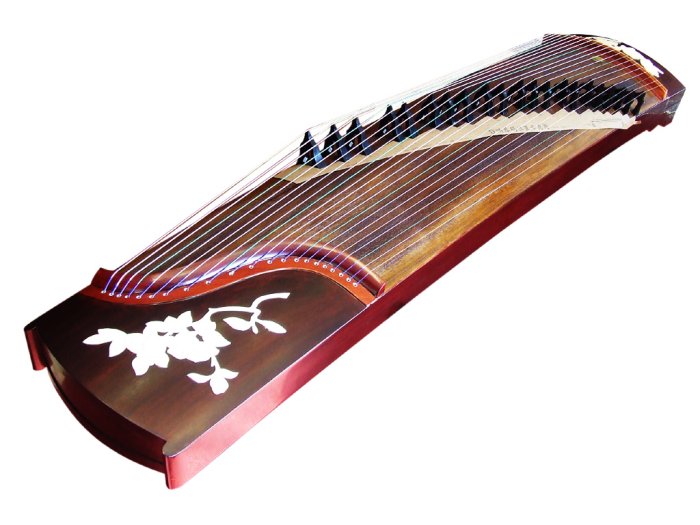10 Ancient Chinese Musical Instruments You Didn’t Know About
AncientPages.com - Have you ever wanted to listen to the sound of music in China thousand of years ago? In ancient China people played a number of greatly unknown musical instruments. The sound of these instruments was wonderful and some of these instruments are still used today.
In this top list we take a closer look at some truly remarkable ancient Chinese musical instruments.
1. Xun – one of the oldest Chinese musical instruments
Xun is one of the oldest Chinese musical instruments. It has a history of more than 7,000 years. The instrument has been discovered along the Yangtze River and the Yellow River as Neolithic relics, and is believed to have been very popular in ancient China. Ancient people used a kind of oval stone with naturally formed holes on it to hunt the preys. When thrown it at the animals, the stone produced a whistling sound as the air flowed through the holes, which could have provided inspiration for early wind instruments.
Xun is easily made of clay with an egg shape and there are no more than ten holes on the surface. It can produce sound with a tamber similar to that of human voice, and is suitable for performing some lamenting aria. It is often accompanied by the Chi, a bamboo pipe with eight holes.
2. Xiao - an ancient Chinese flute and instrument of many moods
The earliest Xiao appeared during the Han Dynasty (206B.C. -220A .D.), and it was then called Qiangdi, which was popular among the Qiang people in Sichuan and Gansu Provinces. In the 1st century BC, it became popular in the Yellow River region. Later, it was developed into an instrument with six holes, which was extremely similar to today's Xiao having six holes.
When people listen to the Xiao they say they’re reminded of a lonely moon highly hanging in the sky of a frosty autumn night. The sound is wonderful and it really reminds of nature.
The instrument’s structure is quite simple, very much like the flute, but only longer. It is usually made of bamboo. The top is sealed by bamboo. There is a mouth on the top and five sound holes on the frontal side and one hole at the back. Beside, there are other holes that are designed to adjust the tunes, smooth the tones, and raise the volume.
3. Sheng – an ancient Chinese wind instrument
Sheng is a kind of wind instrument in China. It has played an active role in promoting the development of Western musical instruments. In 1978, Paosheng, the earliest form of Sheng, were unearthed in Hubei Province in a royal tomb with a history more than 2,400 years ago. The development of the Sheng can be traced back to 3,000 years ago. The instrument is quite similar in form to another kind of instrument called the Paixiao.
Sheng originally consists of several bamboo pipes bound together with ropes or wooden frames. To make Sheng distinguishable from Paixiao, designers added bamboo reeds and a cup-shaped Dou to it. The cup-shaped Dou is made of calabash, and the blowtorch is made of wood. A dozen bamboo pipes are arranged on top of the Dou. After the Tang Dynasty, performers began to make wooden Dou. Later, Dou and the reed were made of copper. Sheng sounds bright and sweet, the alt of which is clear, the mediant (middle tone) soft, and the bourdon (low note) deep and loud. Among the traditional piped instruments, Sheng is most capable of performing harmonies. Sometimes in grand ethnic orchestras, alto, mediant, and bourdon tones are played together.
4. Pipa – a 2,000-year-old Chinese lute
Also called the Chinese lute, the pipa is about 2,000 years old and one of the most popular instruments in China. Originally, the pipa was held at an angle, like a guitar, but during the Tang dynasty, an innovative musician held his pipa upright in order to stand out at a competition.
Pipa has four-stringed lute with 30 frets and pear-shaped body. The musician holds the instrument upright and play with five small plectrums attached to each finger of the right hand. The history of Pipa dates back at least 2,000 years. This instrument has extremely wide dynamic range and is remarkably rich and expressive.
The original pipa comes to us from the second century BC. Poetry and drawings depict an instrument held horizontally and named for the forward (pi) and backwards (pa) plucking of the strands.
The pipa has a long history with the Chinese people. Compositions were passed from master to student over hundreds of years. While many of these compositions have been lost over time, several still exist to delight listeners today.
5. Guzheng – ancient musical instrument from the Warring Period
Guzheng originated during the Warring Period more than 2,500 years ago in China. The earliest known versions were constructed with a bamboo frame and used silk strings. Its scale was pentatonic, using the notes DO, RE, MI, SO, and LA with a major note for each of its five strings. Because Guzheng was developed in a region called ‘Qin Guo', its name became known as the ‘Qin zheng'.
Guzheng became very popular in the imperial court and among the common people. Historical records from ancient books and scholarly writings give vivid accounts of the instrument and its music. Hou Jin, a scholar of the Eastern Han Period (25 A.D. - 220 A.D.) wrote that Guzheng's sound touches the Heavens above and the Gods and spirits below.
By the Tang Dynasty (618 A.D. - 907 A.D.), the number of strings had increased from five to thirteen, and the bamboo had been replaced with wu-tong or paulownia wood for the frame of the instrument. In addition, many new forms of Guzheng appeared through cultural exchanges with Japan, Korea, Mongolia, Vietnam and many other Asian countries.
Guzheng remained popular through the late Qing Dynasty ( 1644 A .D. - 1911 A .D.), where contemporary Guzheng musicians began the first attempts to formalize Guzheng music by compiling and arranging both classical and popular works such as ‘ High Mountain and Flowing Water' and ‘Evening Song of the Fisherman.' In 1948, the renowned musician Cao Zheng established the first university level Guzheng program in China. The old silk strings were replaced with nylon strings, which are still being used today.
6. Guqin - also known as the Seven-stringed Qin
Guqin is also known as the Seven-stringed Qin. There is an ancient story behind this intriguing instrument. During the spring and autumn Period (770 B.C. - 476 B.C.), there was a man named Yu Boya, who was a famous music master at that time. He happened to meet Zhong Ziqi. Whatever Yu played, Zhong could understand very well and so they became bosom friends. They decided to meet again the next year. Unfortunately, Zhong died before they could meet. Yu played at Zhong's graveyard for the last time and crashed his Guqin. He decided never to play the Guqin any more to show his deep friendship to Zhong and how difficult to meet a bosom friend.
The body of the Guqin is a long and narrow wooden sound box. Usually, it is 130 centimeters long, 20 centimeters wide and 5 centimeters high. The surface is generally made of paulownia wood or China fir, and has seven strings stretched along it. On the edges are 13 inlaid jade markers. Catalpa wood is used for the base, and there are two holes, one big and one small, which are named the ‘phoenix pool' and ‘dragon pond', to emit the sound.
The fingering skills are known as recital, rubbing, plucking, concentration, floating notes and harmonious notes. The instrument is rich in tone color with airy and floating notes, which can be called the sound of harmony. The most unique part of the Guqin probably lies in its performance etiquette. Before giving a performance, players should take a shower and burn incense in the room. They are to keep their minds peaceful and concentrated to ward off evil spirits.
The Guqin is a representative instrument of traditional Chinese musical culture. The most famous Guqin repertoire is the High Mount and Flowing Water, which is also a metaphor for friends who can communicate their spiritual pursuits.
7. Ancient Chinese chimes – astounding archaeological discovery
Chinese archeologists found in the tomb of King Yi of the Zeng State a huge underground music palace located in Hubei Province in 1978. The chime bells of King Yi of the Zeng State are now preserved in Hubei Provincial Museum.
The excavation of the chime bells astounded the world's archeological society, since it's extremely rare in the world cultural history to find such exquisite musical instruments and magnificent band existed over 2,000 years ago. The chime bells of King Yi of the Zeng State are a complete set of percussion instrument excavated from the tomb of King Yi of the Zeng State in the Warring States Period (433 B.C.). It reflects the luxurious life of the aristocrats in that period, as well as the proficiency in bronze casting in ancient China.
Chinese Chimes are made flat with sharp corners like two tiles pieced together. So, the sound wanes faster, making it possible to organize the bells into groups and play them as a rhythm instrument. Zeng Houyi's bronze chimes are perhaps the greatest find among all the chimes unearthed so far in terms of the size and significance. Bells The bells fill a 60-square-meter area and a total weight of five tons. The heaviest one is 203.6 kilogram and is 1.5 meters tall, while the smallest.
8. Konghou- an ancient Chinese, plucked string instrument
The Konghou is an ancient Chinese, plucked string instrument. It is not of Chinese origin, but was introduced to China from the West during the Han Dynasty about 2,000 years ago. According to historical records, it was divided into the horizontal konghou and the vertical konghou because of difference in shape.
The konghou became popular during the Han, Sui and Tang Dynasties when playing techniques became highly sophisticated. During the past hundred years, however, this ancient musical instrument became virtually extinct. A group of music scholars and instrument craftsmen researched various historical documents, and in 1980, a new type of konghou was born.
9. Dizi – ancient Chinese bamboo flute
Although the structure of the flute is simple, it has a history of more than 7,000 years.
About 4,500 years ago, designers began to make flutes with bamboo instead of bone. During the reign of the second emperor of the Han Dynasty in the 1st century BC, the flute was also called Hengchui, or literally ‘blowing horizontally.' From the seventh century on, the hole covered by membrane has been used. With the development of free verse of the Song Dynasty and the music of the Yuan Dynasty, the flute became the main part of the accompaniment, and was also indispensable in folk and ethnic dramas.
For many Chinese people, the melody of the transversely-played bamboo flute or Dizi in Chinese, calls to mind a picture of a country cowherd riding a bull in the spring breeze.
The flute has a rich performance spectrum. Not only can it play loud and sonorous tunes, but also cheerful dancing music and peaceful ditties. In addition, it can imitate various sounds in nature such as the twittering of birds.
See also:
10 Ancient Love Symbols You Didn’t Know About
10 Great Ancient Mysteries Of China
10. Liuqin – ancient Chinese instrument reminding of a mandolin
Liuqin is a smaller version of pipa with four strings, which sound similar to mandolin. Throughout its history, the liuqin came in variations ranging from two (which only had a range of one and a half octaves) to four strings. However, the earliest precursor of the modern four-stringed version of the instrument appeared and experienced popularity during the Qing Dynasty. This version had two strings, and was only used for accompaniment purposes in traditional operas, as mentioned before.
The two-stringed liuqin remained in use for much of dynastic China from the Qing Dynasty until the late 20th century.
Copyright © AncientPages.com All rights reserved. This material may not be published, broadcast, rewritten or redistributed in whole or part without the express written permission of AncientPages.com
More From Ancient Pages
-
 Vikings Filed Their Teeth For Unknown Reasons
Featured Stories | Mar 2, 2016
Vikings Filed Their Teeth For Unknown Reasons
Featured Stories | Mar 2, 2016 -
 Mysterious Hornet Spook Light In Missouri
Featured Stories | Jun 26, 2024
Mysterious Hornet Spook Light In Missouri
Featured Stories | Jun 26, 2024 -
 Water Storage Failure And Short-Lived Koh Ker Capital Of Khmer Empire
Archaeology | Nov 1, 2019
Water Storage Failure And Short-Lived Koh Ker Capital Of Khmer Empire
Archaeology | Nov 1, 2019 -
 Mystery Of The 2,000-Year-Old ‘Urn Burial’ Ceremonies: 113 Tombs Discovered Near the Ancient City Of Fudi
Archaeology | Oct 11, 2016
Mystery Of The 2,000-Year-Old ‘Urn Burial’ Ceremonies: 113 Tombs Discovered Near the Ancient City Of Fudi
Archaeology | Oct 11, 2016 -
 The Hittites, Mysterious People Of A Thousand Gods – Collapse Of The Hittite Empire
News | Sep 9, 2015
The Hittites, Mysterious People Of A Thousand Gods – Collapse Of The Hittite Empire
News | Sep 9, 2015 -
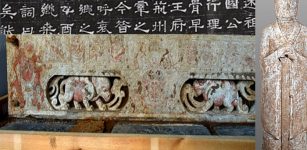 1,500-Year-Old Tomb With Patterns Linked To Zoroastrianism And Buddhism Unearthed In C. China
Archaeology | Jan 19, 2021
1,500-Year-Old Tomb With Patterns Linked To Zoroastrianism And Buddhism Unearthed In C. China
Archaeology | Jan 19, 2021 -
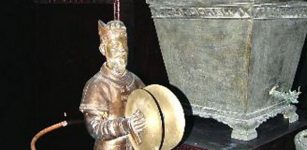 Highly Advanced Robots In Ancient China
Ancient Technology | Aug 7, 2015
Highly Advanced Robots In Ancient China
Ancient Technology | Aug 7, 2015 -
 Excavations In Keezhadi, Tamil Nadu, India Shed Light On Life During Sangam Age
Artifacts | Aug 24, 2015
Excavations In Keezhadi, Tamil Nadu, India Shed Light On Life During Sangam Age
Artifacts | Aug 24, 2015 -
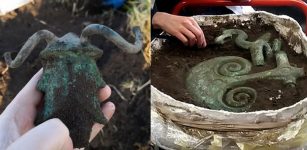 Mysterious Kallerup’s Double-Headed Figurine – Evidence Of Unknown Norse God Or Worship Of Roman God Janus In Ancient Scandinavia?
Artifacts | Mar 19, 2020
Mysterious Kallerup’s Double-Headed Figurine – Evidence Of Unknown Norse God Or Worship Of Roman God Janus In Ancient Scandinavia?
Artifacts | Mar 19, 2020 -
 Mystery Of The Giants’ Grave of Coddu Vecchiu
Featured Stories | Jun 27, 2015
Mystery Of The Giants’ Grave of Coddu Vecchiu
Featured Stories | Jun 27, 2015 -
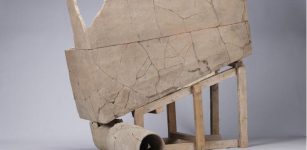 2,400-Year-Old Flush Toilet Discovered In China
Archaeology | Feb 24, 2023
2,400-Year-Old Flush Toilet Discovered In China
Archaeology | Feb 24, 2023 -
 Ancient Greeks Had Knowledge Of Advanced Lifting Technology Long Before Modern Cranes Were Invented
Ancient Technology | Aug 29, 2019
Ancient Greeks Had Knowledge Of Advanced Lifting Technology Long Before Modern Cranes Were Invented
Ancient Technology | Aug 29, 2019 -
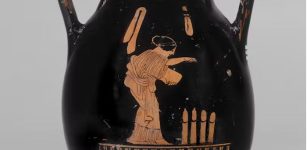 The Long And Satisfying 28,000-Year History Of The Dildo
Featured Stories | Feb 27, 2023
The Long And Satisfying 28,000-Year History Of The Dildo
Featured Stories | Feb 27, 2023 -
 Sirius Mystery – Scientific Evidence Of Alien Contact 5,000 Years Ago – Book Review
Civilizations | Apr 1, 2014
Sirius Mystery – Scientific Evidence Of Alien Contact 5,000 Years Ago – Book Review
Civilizations | Apr 1, 2014 -
 Freya – Vanadis: Beautiful Desirable Goddess And Her Brisingamen Necklace In Norse Mythology
Featured Stories | Jan 21, 2018
Freya – Vanadis: Beautiful Desirable Goddess And Her Brisingamen Necklace In Norse Mythology
Featured Stories | Jan 21, 2018 -
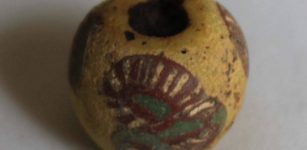 Unique Glass Bead From The Time Of Jesus Discovered In Fire Pit In Sweden
Archaeology | Jun 17, 2017
Unique Glass Bead From The Time Of Jesus Discovered In Fire Pit In Sweden
Archaeology | Jun 17, 2017 -
 Almost 3,000 Year-Old Burial Site Of Urartian Royals Discovered In Turkey’s Famous Van
Archaeology | Jul 31, 2019
Almost 3,000 Year-Old Burial Site Of Urartian Royals Discovered In Turkey’s Famous Van
Archaeology | Jul 31, 2019 -
 People With Blue Eyes Have One Common Ancestor Who Appeared 10,000 Years Ago
Civilizations | Feb 24, 2017
People With Blue Eyes Have One Common Ancestor Who Appeared 10,000 Years Ago
Civilizations | Feb 24, 2017 -
 Viking Ship Found With Unexpected Goods For Unclear Purpose Puzzles Scientists
Vikings | Nov 24, 2024
Viking Ship Found With Unexpected Goods For Unclear Purpose Puzzles Scientists
Vikings | Nov 24, 2024 -
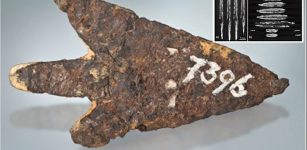 Arrowhead Made Of Meteoritic Iron From The Late Bronze Age Settlement Of Mörigen, Switzerland – Examined
Archaeology | Aug 1, 2023
Arrowhead Made Of Meteoritic Iron From The Late Bronze Age Settlement Of Mörigen, Switzerland – Examined
Archaeology | Aug 1, 2023






